By Eileen V. Quigley, September 11 2013
 It’s happening in our urban and rural forests, in and around our buildings and streets, on our farmland, and in the seagrass meadows, salt marshes and mangroves along our coasts. It’s fostering new connections between public, private and academic institutions. Done right, it just might stem the tide of runaway climate change.
It’s happening in our urban and rural forests, in and around our buildings and streets, on our farmland, and in the seagrass meadows, salt marshes and mangroves along our coasts. It’s fostering new connections between public, private and academic institutions. Done right, it just might stem the tide of runaway climate change.
What is it? Biocarbon! And the communities of the Intertwine are at the forefront of this quiet revolution.
 With each passing year, scientists such as David Montgomery are learning and communicating the true power of plant life and healthy soils to contain and absorb atmospheric carbon, helping to reduce climate-destabilizing pollution. Where are we in this new campaign against climate change? Well, there’s bad news, good news, and great news.
With each passing year, scientists such as David Montgomery are learning and communicating the true power of plant life and healthy soils to contain and absorb atmospheric carbon, helping to reduce climate-destabilizing pollution. Where are we in this new campaign against climate change? Well, there’s bad news, good news, and great news.
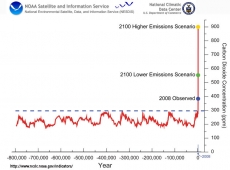 The bad news: As a direct result of humanity burning fossil fuels and transforming landscapes, atmospheric concentration of carbon dioxide (CO2) is higher now than at any time in at least 800,000 years and probably longer. Increasingly, scientists are pointing to 350 parts per million as the target to restore a “safe operating space for humanity.” If we fail to make the shift from fossil fuels to clean energy, CO2 levels in the atmosphere will continue to climb further into the extreme danger zone.
The bad news: As a direct result of humanity burning fossil fuels and transforming landscapes, atmospheric concentration of carbon dioxide (CO2) is higher now than at any time in at least 800,000 years and probably longer. Increasingly, scientists are pointing to 350 parts per million as the target to restore a “safe operating space for humanity.” If we fail to make the shift from fossil fuels to clean energy, CO2 levels in the atmosphere will continue to climb further into the extreme danger zone.
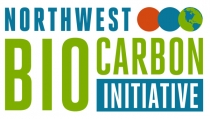 The good news: The concept and practice of biocarbon is gaining ground. As a key Climate Solutions program, the Northwest Biocarbon Initiative (NBI) is galvanizing the region’s top biocarbon innovators – farmers, foresters, community leaders, and thinkers – to demonstrate the essential role that natural systems can play in reducing carbon dioxide levels in the atmosphere. Check out our Innovation Partners from across the Northwest.
The good news: The concept and practice of biocarbon is gaining ground. As a key Climate Solutions program, the Northwest Biocarbon Initiative (NBI) is galvanizing the region’s top biocarbon innovators – farmers, foresters, community leaders, and thinkers – to demonstrate the essential role that natural systems can play in reducing carbon dioxide levels in the atmosphere. Check out our Innovation Partners from across the Northwest.
The great news: Intertwine communities are ahead of the curve, implementing new, cost-effective innovations to reduce reliance on fossil fuels, remove existing carbon pollution and build resilience to withstand climate impacts. Here are just two examples:
-
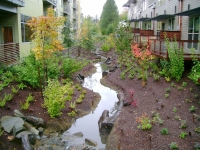 In Portland, Linda Dobson and others at the City of Portland’s Bureau of Environmental Services are leading the way on natural infrastructure to save City money, capture carbon, and enhance neighborhood vitality. Mike Houck and the Urban Greenspaces Institute work diligently with BES to promote the integration of urban green infrastructure with the built environment.
In Portland, Linda Dobson and others at the City of Portland’s Bureau of Environmental Services are leading the way on natural infrastructure to save City money, capture carbon, and enhance neighborhood vitality. Mike Houck and the Urban Greenspaces Institute work diligently with BES to promote the integration of urban green infrastructure with the built environment. -
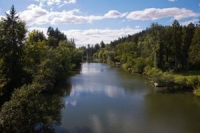 In Tualatin, Clean Water Services (CWS) restored streamside habitat along 35 miles of the Tualatin River watershed calculated that over 100 years the program will remove about 135,000 tons of carbon dioxide from the atmosphere. In addition, by investing in natural infrastructure, CWS avoided the need to build a cooling facility for the water it discharges into the river, saving the community about $100 million while also avoiding the energy consumption and carbon emissions.
In Tualatin, Clean Water Services (CWS) restored streamside habitat along 35 miles of the Tualatin River watershed calculated that over 100 years the program will remove about 135,000 tons of carbon dioxide from the atmosphere. In addition, by investing in natural infrastructure, CWS avoided the need to build a cooling facility for the water it discharges into the river, saving the community about $100 million while also avoiding the energy consumption and carbon emissions.
You can read more about the climate, economic, and environmental benefits of natural infrastructure approaches in The Intertwine and beyond through a new NBI report released in August. In Natural Infrastructure: A Climate Smart Solution, we describe how different natural infrastructure solutions for forests, farms, cities, watersheds, and the coast can:
- dramatically cut back on the need for carbon-intensive energy generated by fossil fuels;
- capture carbon dioxide from the atmosphere; and
- help build resilience in the face of our changing climate.
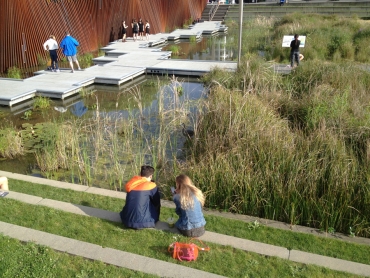 The challenge we face is bringing biocarbon to scale in the Northwest. If we are to counter runaway climate change, we’ll need to see these principles, practices, and positive solutions instilled in natural resources agencies, design-build and architecture firms, and planning offices at various level of government. Maybe you’re the next step? Please get in touch and help us make the biocarbon revolution quiet no more.
The challenge we face is bringing biocarbon to scale in the Northwest. If we are to counter runaway climate change, we’ll need to see these principles, practices, and positive solutions instilled in natural resources agencies, design-build and architecture firms, and planning offices at various level of government. Maybe you’re the next step? Please get in touch and help us make the biocarbon revolution quiet no more.

 Eileen V. Quigley is the Director for Strategic Innovation at
Eileen V. Quigley is the Director for Strategic Innovation at
Add new comment